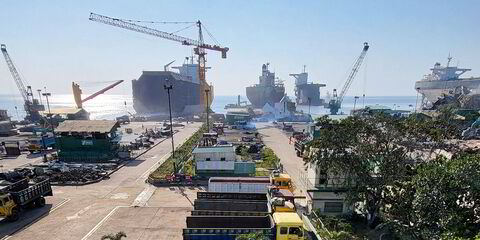Ships that address environmental issues would be the surest place to invest $1bn. However, apart from a select group of major shipping lines, the industry will not be blessed with government subsidies for “green” ammonia or methanol, neither of which are yet practical or safe.
This article is part of a series written by people across shipping in response to this question about how to deploy a hypothetical TradeWinds Sustainable Shipping Fund:
How, where and why would you invest $1bn for the best return in sustainable shipping, as the industry grapples with the need to cut carbon emissions, improve efficiency and keep cargoes moving in a world facing multiple economic and political challenges? The investment will be made now and ideally held for the next seven years to the end of the decade. As an added bonus, give one policy or regulation you would like to implement from 1 January 2023 to benefit shipping?
However, next-generation LNG-fuelled ships (eg, Himalaya), helped by a repricing of LNG bunkers back to a sensible cost-plus model, seem like a good bet.
But rather than dwell on the future fuel debate, I would like to propose putting our money into making the myth of “green ship recycling” a reality.
Until solutions are found for how to recycle the thousands of ships we must take out of the water, shipping will have a serious environmental problem to deal with. The Hong Kong International Convention for the Safe and Environmentally Sound Recycling of Ships was adopted in 2009 and still has not come into force.
One billion dollars would go some way to establishing a truly green-recycling hub. This hub would be focused on the recycling, rather than downcycling, of steel to ensure that the ship’s metal is properly reused.
Our green-recycling hub would use the “cradle-to-cradle” approach of ship demolition — not only would the vessel’s steel be recycled but parts of the ship’s machinery would also be repurposed for use in newbuildings.
In a perfect world, this green-recycling hub would also be powered with renewable energy. Dismantling vessels and recycling the steel is incredibly energy intensive. Having the hub located in an area with ready access to clean energy would be important.
Equally, to reduce the footprint of the cradle-to-cradle approach, it makes sense to situate this green-recycling hub near to where the new ships are being built, rather than the beaches of Bangladesh or India.
To protect the environment, the world’s fleet needs to be replaced. Unless investment is also directed to green and responsible recycling of the existing fleet, fleet replacement will meet a bottleneck.
Just as it is important to consider the carbon intensity of fuels on a lifecycle basis, it is equally as important to consider the carbon intensity of ships on a lifecycle basis. Investment in a green vessel-recycling hub has an outsized benefit on the future of shipping.
Once the Carbon Intensity Indicator methodology is fixed, the bottom category of ships must be scrapped within 12 months.



